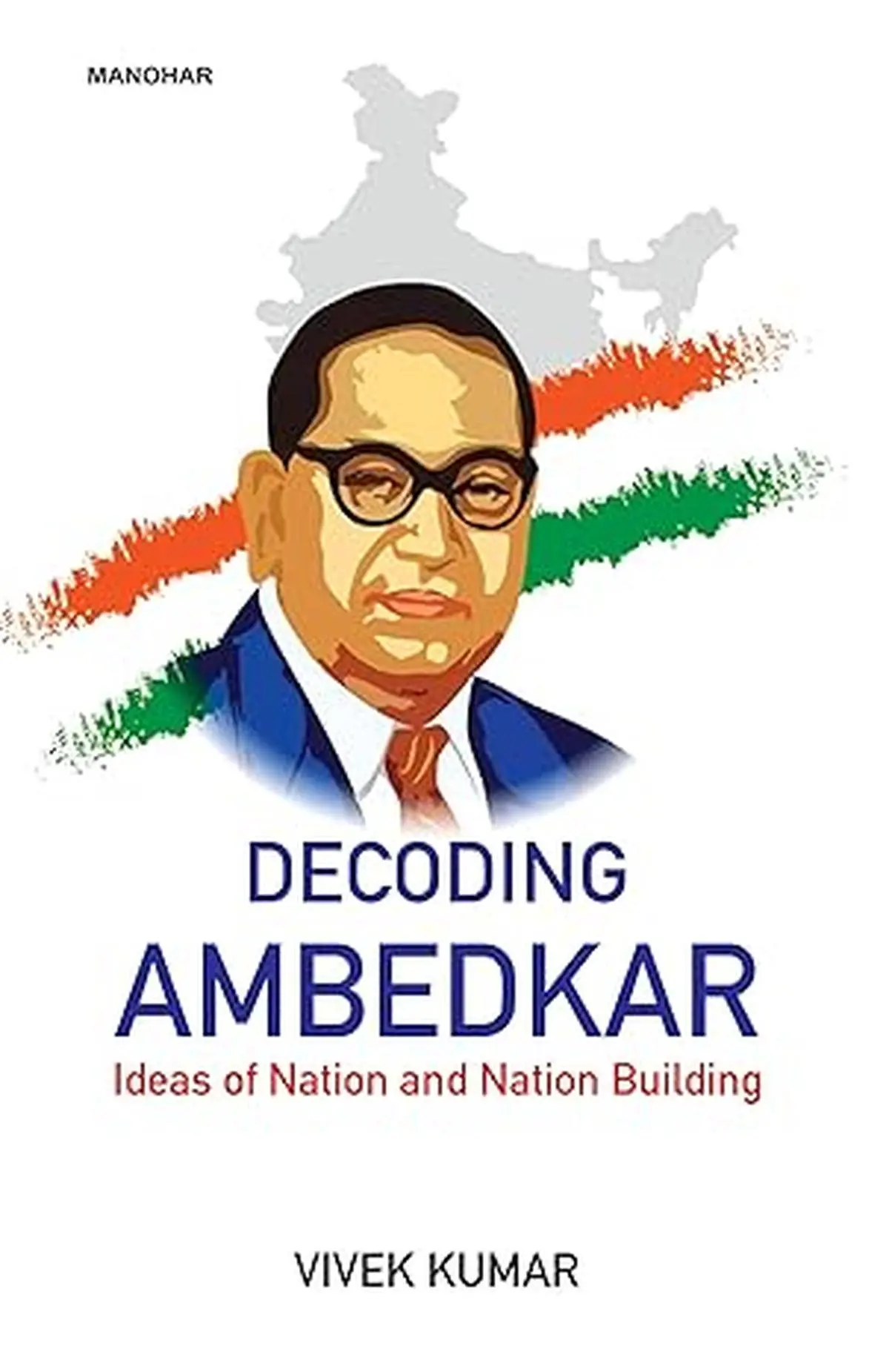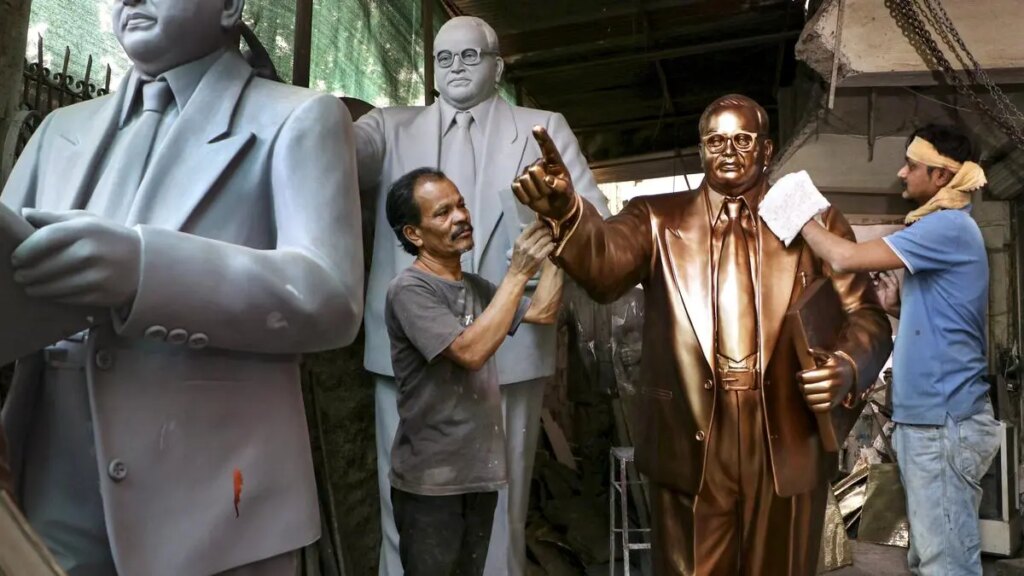Professor Vivek Kumar’s latest book evaluates B.R. Ambedkar’s ideas for the building of India as a modern nation-state, and his contributions to it when the idea was still nascent. It highlights the erasure of Ambedkar’s contributions in key areas of governance, leadership, and policymaking, which were neither acknowledged nor studied by his contemporaries or Indian scholars in history, economics, law, philosophy, religion, politics, and sociology.
Generations of Indian students grew up knowing little about Ambedkar except that that he was “the architect of the Indian Constitution” and “leader of the Dalits”. This multifaceted genius, one of the most accomplished scholars of all time, was stigmatised, and his ideas and origins misrepresented. He was accused of being pro-British. Films and books set in pre- and early post-independence, including Richard Attenborough’s Gandhi, completely ignored him.
Decoding Ambedkar: Ideas of Nation and Nation Building
By Vivek Kumar
Manohar Publishers
Pages: 142
Price: Rs.895
In contrast, Ambedkar’s works have been highly regarded by Western academia. While the Ambedkar Chair in Indian Constitutional Law has been established at his alma mater Columbia University, there are memorial lectures in his name at Simon Fraser University, Calgary University and York University in Canada, and Manchester Metropolitan University and the London School of Economics in the UK.
Only recently have younger scholars in India and abroad produced dozens of important works on Ambedkar’s thought with regard to caste, economics, constitutional law, political philosophy, religious studies, and Buddhism. Christophe Jaffrelot wrote Analysing and Fighting Caste: Dr. Ambedkar and Untouchability in 2005 “to do justice to a then marginalised key personality of Indian history” because he “remained one of modern India’s most neglected public figures”.
Also Read | Ambedkar at 134: Rethinking justice, democracy, and the nation
In four short but well-researched chapters and a conclusion, Prof. Kumar covers Ambedkar’s ideas and praxis, his most well-known work on caste and the need for its annihilation, and his perspective on social justice. He also offers concrete suggestions to counter the effects of the caste system and their impact on academics, and proposes that Dalits must focus on areas other than caste to have an impact on the academy as well as the emancipation of the whole society.
Ambedkar believed that India was not a nation but a nation in the making. In the Constituent Assembly in November 1949, he said, “I am of the opinion that in believing that we are a nation, we are cherishing a great delusion.” He asked: “How can a people divided into several thousands of castes be a nation?”. He believed that caste was an impediment to the process of nation-building: “In every Hindu the consciousness that exists is the consciousness of his caste. That is why the Hindus cannot be said to form a society or a nation”. He considered castes as anti-national because “they bring about a separation in social life….because they generate jealousy and antipathy between caste and caste”. He asserted that caste was the real reason that Adivasis continued to be underdeveloped, depriving them of the resources required to make them good citizens, and said “We must overcome all these difficulties if we wish to become a nation in reality.”

Cover of Vivek Kumar’s Decoding Ambedkar: Ideas of Nation and Nation Building.
| Photo Credit:
By Special Arrangement
‘Pakistan or the Partition of India’
As early as 1940, Ambedkar published Pakistan or the Partition of India, in which he identified the relationship between Hindus and Muslims as critical to the future of independent India. He offered a nuanced option to deal with the reality of their “mutual animosity” both in politics and religion; rather than an abrupt Partition, he proposed a referendum of Muslims and non-Muslims and the limitation of districts with Muslim and non-Muslim majority areas. He was also full of optimism: “I have no doubt that despite the demand by the Muslim League for Partition, some day light would dawn on them and they too will think that a united India would be better for them.”
Also, he recognised that even Hindu provinces had a history of divisive politics, with a recorded history of Sikhs and Bengalees, Marathas, and other Hindu states being at loggerheads. Further, differences of language, race, and past conflicts tended to divide them.
Exploring this question further, Kumar quotes the sociologist T. K. Oommen: “ …[t]he two most critical elements in nation formation are territory and language. These could be ancestral or adopted. Thus, if a people have a common homeland and adopt a common language, they could become a nation. Such an effort was made and is being pursued in India.” However, Ambedkar goes further in his own analysis, using Ernest Renan’s work, and argues that common suffering is a great bond, and hence a nation is based on sentiments or will, even more than religion, race, language, or territory.
“Ambedkar was prescient enough to recognise that ‘the dignities of people, dignities of leaders and dignities of parties ought to count for nothing. The destiny of the country ought to count for everything.’”
Ambedkar also went on to differentiate between nationality and nationalism. While he defined nationality as “consciousness of a kind, awareness of the existence of that tie of kinship”, nationalism for him was “the desire for a separate national existence bound by this tie of kinship…there cannot be nationalism without the feeling of nationality being in existence.” He also stated that the converse need not be true. “For nationality to flame into nationalism, two conditions must exist. First, there must arise the ‘will to live as a nation’, as a dynamic expression of the desire; second, there must be a territory which nationalism could occupy and make it a state and cultural home of the nation.”
Ambedkar’s scheme of things
In Ambedkar’s scheme of things, according to Kumar, nation-builders had to realise that India is not yet a nation; cultivate forgetfulness about the war and turbulence of the past; ensure the freedom of those treated as servile classes; and lastly, break the monopoly of the governing elite on political power. He quotes Renan: “the essence of a nation is that all its individuals have things in common; and also, all of them should hold many things in oblivion.” This would apply to caste Hindus and Dalits, and Hindus and Muslims as well, to make a positive beginning despite past animosity.
Ambedkar identified four groups kept out of power: Dalits, Backward Classes, Muslims and other minorities, and women in general. A popular government in India must not only have representation of persons but also representation of opinions. Administration, involving rule-making, should not be entrusted only to the class which does not sympathise with the living forces operating in them, and their pains, wants, cravings, and desires.
Also Read | Ambedkar said a Hindu Raj would be the biggest calamity to India: Anand Teltumbde
Herein lies the moral argument for self-representation of each of the excluded groups. Hence the consideration for their inclusion was not efficient administration but humanisation of government, to make it more representative, so that excluded sections could voice their own interests. It was not sufficient to make them electors, they must also be lawmakers.
Ambedkar was prescient enough to recognise that “the dignities of people, dignities of leaders and dignities of parties ought to count for nothing. The destiny of the country ought to count for everything.” He proposed that the government should exercise power with wisdom, because that is the way to carry every section of the country together and to achieve unity.
Cynthia Stephen is an independent journalist and social policy researcher who works in the areas of Dalit studies, affirmative action, and educational policy.
Source:https://frontline.thehindu.com/books/ambedkar-nation-building-caste-social-justice-political-thought-vivek-kumar/article69443021.ece

